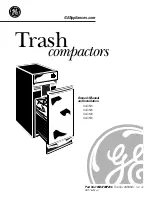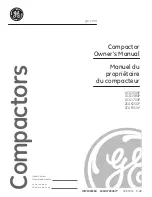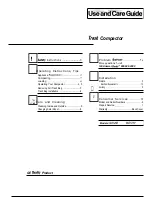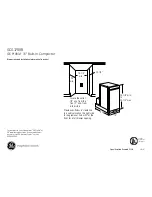
12
ENGINE
Follow the instructions on lubrication intervals in the relative manual. In general users are advised to check the oil
level every 4 working hours and to change it every 50 hours. Always use
15W40
engine oil. Check the air filter oil level
every 8 working hours or more often in very dusty conditions. Top up with the same oil as for the engine (see engine
handbook). On versions with dry filter, replace the cartridge if clogged (do not clean with compressed air jets).
GEARBOX
Check the oil level every 50 working hours by removing the cap and checking with the machine horizontal the
oil reaches between the two notches. If necessary add
MP 80 W/90
oil (international equivalent API GL5 oil, US
MIL-L-2105D, quantity 2,2 litres for 4BIS and 1,9 litres for 7BISD). Change the oil once a year.
ROTARY TILLER
Check the oil level every 50 hours by removing the plug; the oil must almost fill the rotary tiller box. If necessary
add the same oil as for the gearbox.
HELPFUL HINTS FOR PROPER USE:
1) Never keep the clutch disengaged for long periods.
2) Never leave the machine out in the rain.
3) Keep the reversing mechanism in the handlebar support clean and well oiled.
4) Never force the gearbox if the gear does not engage; give a succession of little touches on the clutch.
5) Never strain the engine: if smoke comes out of the exhaust, the engine is toiling and must be slowed down.
6) Even “impossible” grounds can be tilled, but the machine must be well run-in first.
7) Never work at full throttle.
8) If the engine overheats on the first day, it must be stopped for a few minutes’ rest.
9) Check the tyre pressure often.
10) When fitting the implements (e.g. rotary tiller) take care not to damage the coupling (fig. 29).
END OF SEASON MAINTENANCE
Clean the machine carefully; change the engine, gearbox and tiller gearbox oil. Clean the air filter.
Sharpen and grease the blades, replacing them if worn.
FOR LONG IDLE PERIODS
In case the machine is not to be used for a long period, the following precautions are recommended:
-
empty the fuel tank and the carburettor;
-
drain the oil from the engine;
-
clean the engine and the machine thoroughly;
-
oil the handlebar support reversing mechanism.
I M P L E M E N T S
Attention!
While attaching the different implements to the flange, make sure that the two parts are perfectly aligned. The
nuts of the two stud-bolts must be screwed on by hand and then using a wrench so that they apply pressure to
the flange simultaneously (fig. 29).
QUICK COUPLING
The quick coupling is designed to allow various implements to be hitched to the machine easily; the implement
is disconnected by simply pulling a lever, without the aid of spanners. This accessory consists of two parts, one
fixed to the machine and the other to the implement. Users are therefore advised to purchase just one piece for
the machine, and one for each implement (fig. 24). Grease every 50 hours.
EXTENSION FOR IMPLEMENTS
The extension is used to balance the weight of front attachments compared to that of the machine. It is fixed to
the attachment flange of the machine using two stud nuts.
ROTARY TILLER
The rotary tiller is used to break the surface layer of the ground in order to increase its permeability and at the same
time to get rid of weeds. Till in first speed if the soil is hard and tough or in second speed in soft, sandy soil.
The working depth can be adjusted by lifting or lowering the central blade situated under the rotary unit. The tiller
cover position will change at the same time. Raise the blade to increase the depth. Start work with the blade in
its lowest position, and then raise it if greater depth is required.
N.B. - On hard soils the machine may jump forward. In this case lower the central blade and set it into
the third hole. Check that the hoes are fitted correctly (see fig. 9).
Summary of Contents for 4 BIS
Page 1: ...EDIZIONE 2009 MOTOCOLTIVATORI 4 BIS 7 BISD 02139...
Page 2: ......
Page 3: ...3...
Page 42: ...Fig 6 Fig 7 Fig 8 Fig 9 Fig 7A Fig 10 Fig 11 Fig 5 42...
Page 43: ...Fig 13 Fig 14 Fig 16 Fig 17 Fig 15 Fig 18 Fig 19 Fig 12 43...
Page 44: ...Fig 21 Fig 22 Fig 24 Fig 25 Fig 23 Fig 26 Fig 20 44...
Page 45: ...Fig 27 Fig 28 45...
Page 46: ...46 Fig 29...
Page 47: ...47 Fig 30...
Page 48: ...48...
Page 49: ......
Page 50: ......
Page 51: ......
Page 52: ......













































